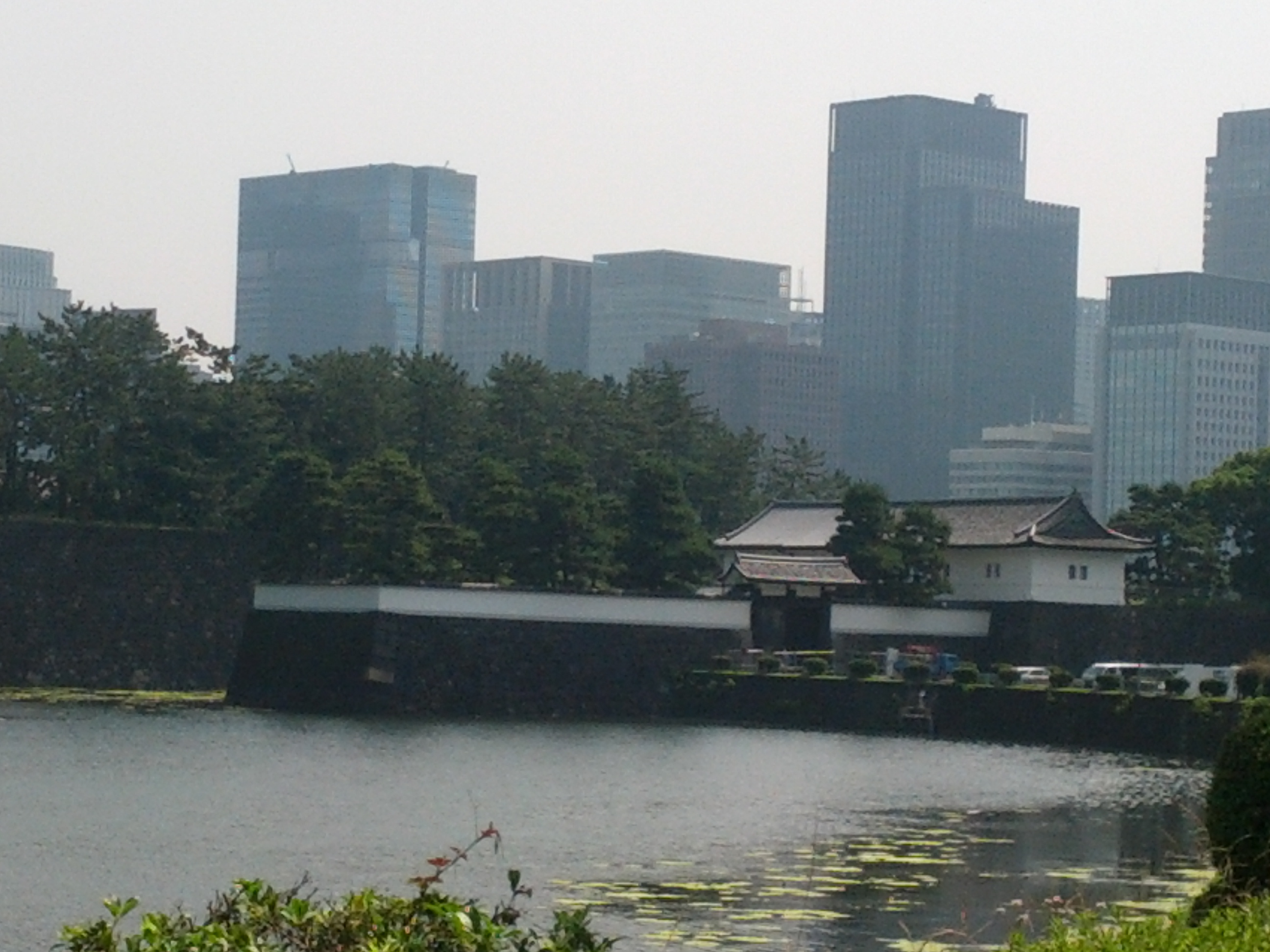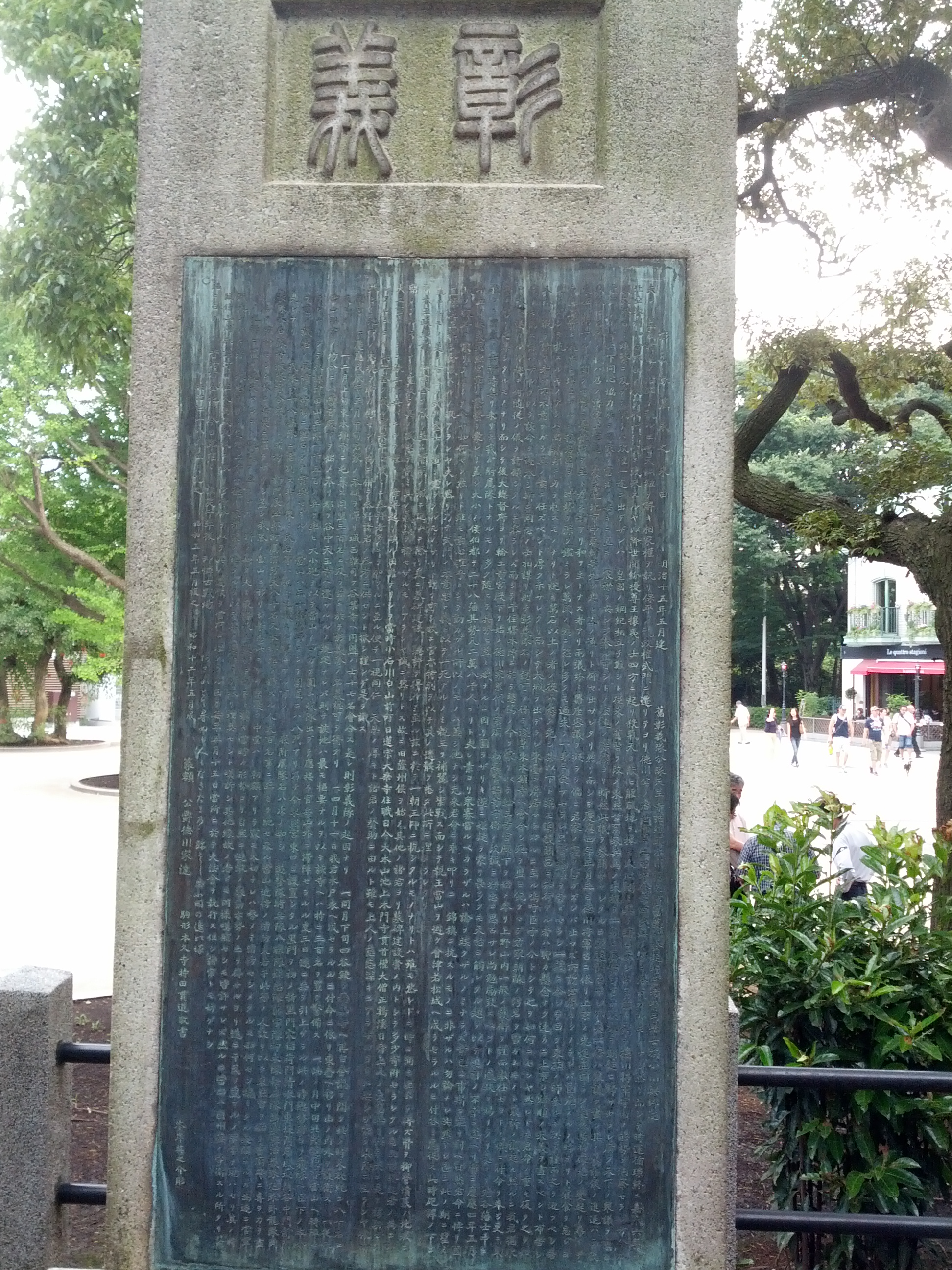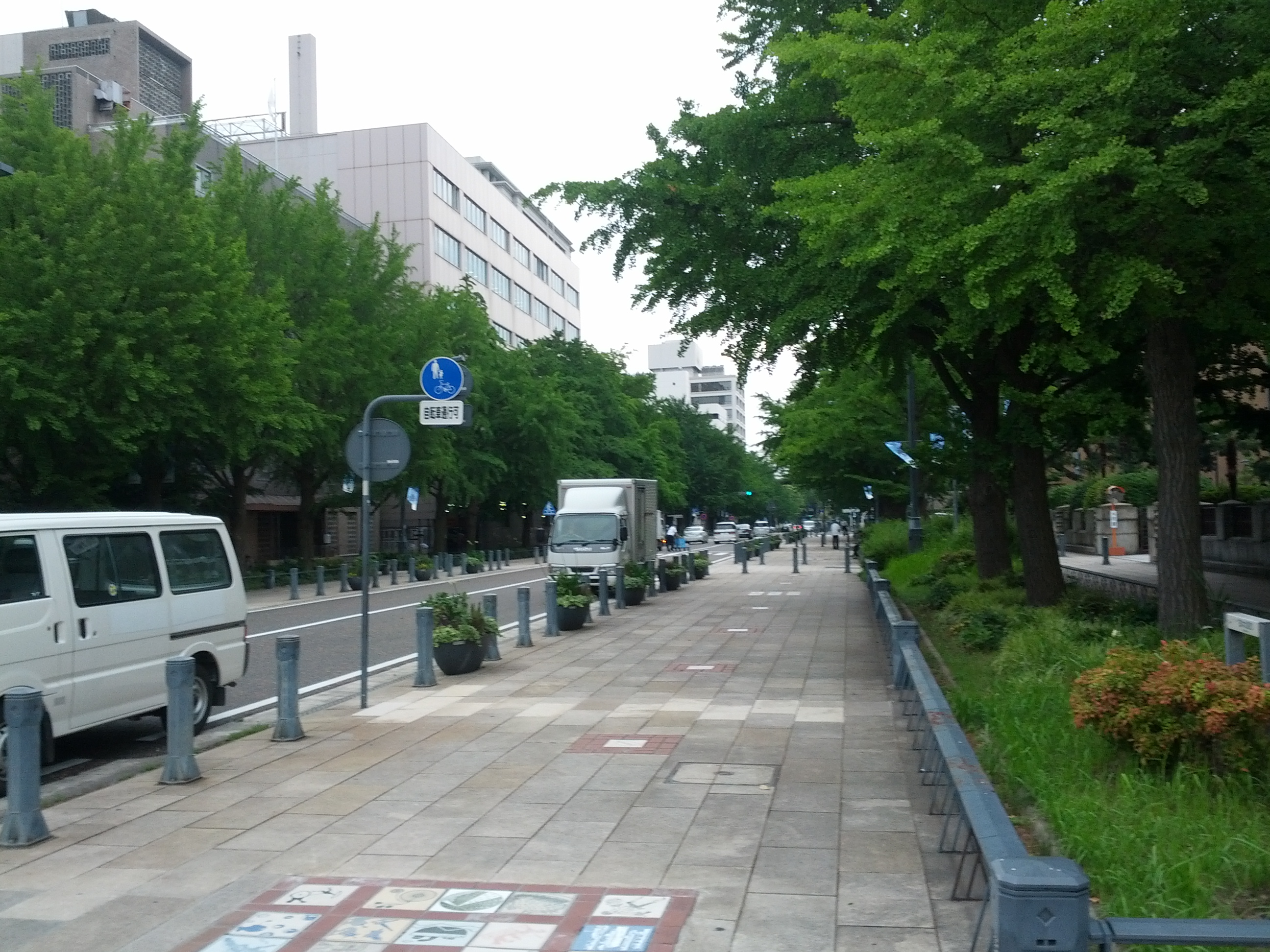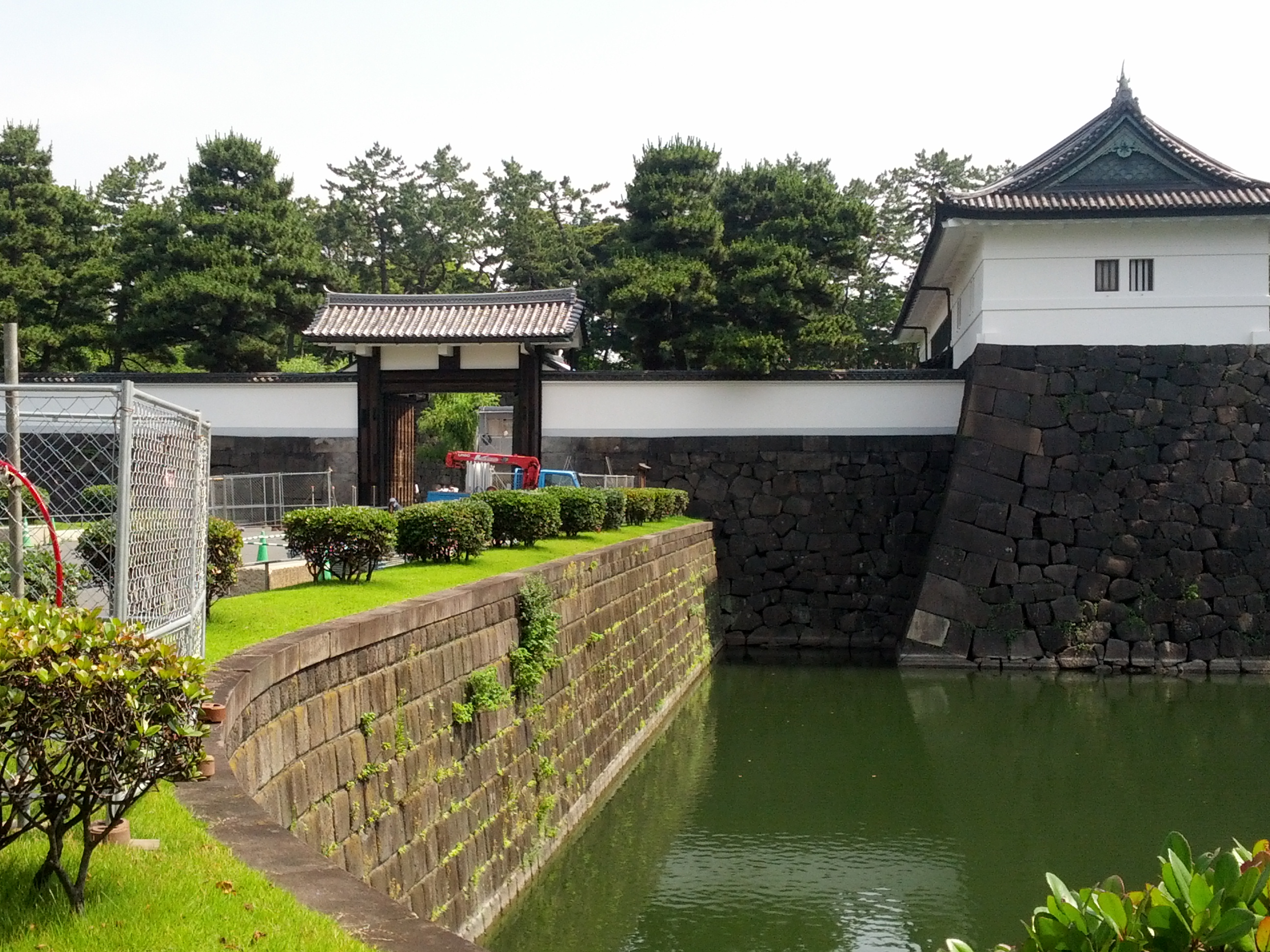So, for those of you who aren’t caught up yet — I’m in Japan doing some summer work for the next few weeks (which is why the supply of new episodes is going to slow down for a bit). I feel bad leaving y’all in the lurch with no new Japanese history-related fun to fill your days, though, so I figured that I would put together some short posts talking about fun historical places in Tokyo and its surrounding areas that I’ll be visiting while I’m here.
First up, we have Sakuradamon, Kan’eiji, and the city of Yokohama, home to the old Foreign Settlement.
Sakuradamon
Sakuradamon, or the Gate of Cherry Blossom Fields, is the southern gate leading out of the Imperial Palace. Today, it faces towards the Kasumigaseki district, where the various branches of the governmental bureaucracy are headquartered.
This is the spot where, in 1860, the repressive bakufu tairo Ii Naosuke was killed by assassins from Mito. The assassins were angry about Ii’s permissive attitude towards foreigners entering the country (in fact, Ii simply felt that he had no choice in the matter) and about Ii’s treatment of the former daimyo of Mito, a political rival named Tokugawa Nariaki. Nariaki was a distant relative of the shogun who advocated for immediate expulsion of all foreigners regardless of the cost. Ii had him placed under house arrest (where he died). It’s worth noting, as a measure of Ii’s power, that he was able to do this to a member (if a distant one) of the shogun’s own family — the influence and authority the man wielded in his day was astounding.
All the influence in the world couldn’t stop his assassins, though. Sakuradamon tended to be somewhat busy with people coming and going from the palace, which gave the assassins enough cover to get close. They jumped Ii and killed him as some of their members distracted his bodyguards. Those not killed by said bodyguards later committed suicide.
It’s worth wondering if Japan would be a different place if Ii had lived — certainly, the bakufu was on an upswing under his rule, but the tactics he used to make that happen were so heavy-handed that in retrospect an assassination attempt seems like an inevitability. We can’t know how different things might have been had he lived, but it’s certainly fun to speculate on whether the bakufu’s future died with Ii Naosuke.

By the way, in an ultimate (and ironic) historical tribute to the man who believed that the entry of Western ideas and technology into Japan was inevitable, there’s now a Tokyo metro station about 100 feet from where he died. I imagine he would have had mixed feelings about that.
Kan’eiji
Those of you who have visited Ueno Park in Tokyo might have noticed that the area of the park is littered with Buddhist temples and shrines. In fact, these different shrines and temples were, once upon a time, subsections of one massive temple of which only part remains, called Kan’ei Temple (ji meaning temple in Japanese).
Kan’eiji was one of the largest temples in the city at one point — it was built by order of Tokugawa Ieyasu, and enjoyed a great deal of official patronage. In fact, it’s one of two temples (along with Zōjōji, which is just south of Tokyo Tower) to house the graves of the old shoguns (with the exception of Ieyasu, who gets a whole shrine all to himself up in the city of Nikko called Tōshōgu).

But if Kan’eiji was so great, you ask, why is it a park now? The answer lies in the final days of the Tokugawa shogunate. The city of Edo surrendered to the Emperor’s army specifically to avoid the destruction of the city’s many great monuments and temples, but some of the younger and more hot-headed Tokugawa supporters in the city couldn’t accept the idea. They formed a military organization called the shōgitai, or “league for the preservation of righteousness,” and seized control of Kan’eiji in July 1868, defying the Imperial Army to come kick them out. They chose Kan’eiji for reasons that were partially military (the temple is atop a hill, and the southern approach is covered by a small lake, limiting the directions from which an attack is possible) and partially symbolic (choosing the sight of the Tokugawa burial grounds in order to demonstrate their loyalty).
The shōgitai, however, had more bravery than sense;though they had numbers on their side and were able to stop the initial head-on attacks by the Imperial Army, they lacked modern artillery and had only a small number of rifles. Seeing this, the Imperial Army began shelling the temple, before launching a two-pronged assault that destroyed the remaining shōgitai forces. In the process, huge swaths of the temple, including its honden, or main hall, were destroyed.

The shōgitai were and are venerated as an example of devotion to the last measure for one’s cause — the idea of dying to prove the righteousness of one’s position is an old one in Japanese culture, and thus the shōgitai‘s actions had a lot of resonance with the common folk. Personally, though, I’m not sure that justifies their actions — their rebellion left hundreds dead and hundreds more homeless (their homes being “collateral damage”), all for a cause that, by July of 1868, was clearly dead.

Yokohama
The city of Yokohama’s claim to fame is that, from the 1860s up until the 1920s, it was the heart of the expat community in Japan. Yokohama was the site where Commodore Perry came ashore to sign the Treaty of Amity and Friendship with Japan in 1854 (the spot where he signed it eventually became the British consulate in the 1920s, and now houses the Yokohama Historical Archives).
Yokohama was conceded to the foreign nations as a leased territory to be governed under their rule and house their diplomats and businesses (thus avoiding the indignity of having to submit themselves to Japanese law). Embassies, business and individuals all made their home in a part of Yokohama that was strictly off-limits to the people of Yokohama themselves without permission from one of the foreign embassies.

The foreign quarter was eventually returned to Japan in the 1910s, but its legacy remains to this day — the area is dotted with Victorian buildings which once housed diplomats, Western businesses or other aspects of Western life which had been imported to Japan. The city’s done a pretty good job of turning what was once seen as an indignity against the entire Japanese nation into a selling point — tourism of the remaining buildings of the foreign quarter has become a popular way for the city to acquire some much-needed revenue.


That’s all for this week, guys. Next week, I’ll have an actual episode for you all — sorry again for the delay!
